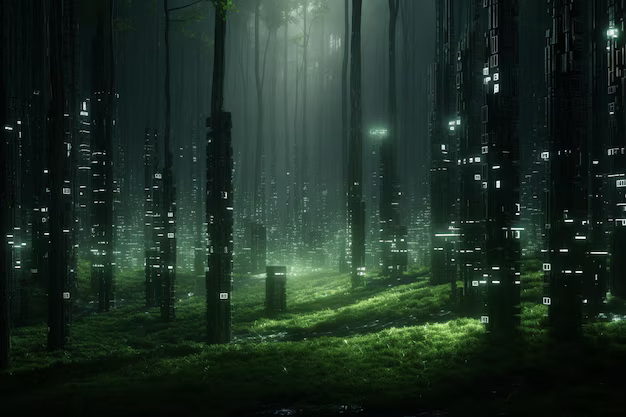“Remind yourself that overconfidence is a slow and insidious killer” - The Ancestor, Darkest Dungeon
This has always run true, even more so in recent years. AAA companies spending years and millions of dollars just for a game to flop immediately has become a running joke amongst players. From Forspoken (remember that? probably not) to The Lord of The Rings: Gollum to the initial release of Cyberpunk 2077.
You'd imagine that with their countless resources, hundreds of people working on a game, and (ideally) dozens upon dozens of playtests, they might have gotten clues about how the public would view their projects. Alas perspective can be a rare commodity to those in high places. Providing a reality check for someone is hard at the best of times, let alone when it's your boss and it's about a multi-million dollar game with too little forethought.
Perspective, however, isn't in short supply merely for the big boys of the industry. Look at the hundreds of flop indie games released constantly. Highway blindness for those focused on their goal, convinced their project is the next indie darling. It's hard to tell yourself you're wrong when it feels like the project is your whole life.
Indie gaming, through the help of distributors like Steam and Epic found their own solution to the question of perspective. Early Access games. In many ways it can be viewed as a middle ground between standalone game demos and full live service games. The minimum viable product is put out into the world, unfinished but polished enough for someone to get a sense of what the game should be. With proper exposure and time, people all around the world test the game for them. From bugs, to glaring design flaws, to even offering ideas for changes and updates to better the game's quality. From Darkest Dungeon to Risk of Rain 2 to Hades 1 & 2, many indie studios have benefited from Early Access as a means of garnering public opinion and helping shape their game as they develop it.
Supergiant Games, developers of Hades, Bastion, and Transistor, utilized EA first with the original Hades Escape From Hell. They decided to stick with it in the sequel, saying they're looking forward to “hearing your feedback about all that we've built so far, and integrating that feedback into our plans for the rest of production”(Supergiant Games, 2024). Their first two major patches to Hades 2 already resulted in minor and major changes to UI art, weapon balance, boons(character upgrades), and more. All impacted by user feedback, both from the minor tweaking of damage numbers to the reworks of abilities. Just like in the original Hades the community feedback helped with the balancing and gradual development of the game, even in smaller narrative ways. When Hades first came into early access, once you reached far enough into the game, the narrator would describe some humorous or strange method of the main character dying early. At first this was meant only as a temporary measure while in early access to explain the lack of further levels to progress. Due to how popular this feature was it became a permanent feature of the game, the titular character having to go through a certain number of wins and forced deaths with the same style of narration in order progress through the various story endings.
Of course, sometimes early access can overwhelm developers, whether due to too many cooks in the kitchen or through backlash at tough design necessities. Looking back at Red Hook's original Darkest Dungeon, during early access there was a very controversial new mechanic, corpses. Much of the community reacted in outrage, not because the mechanic wasn't important to the balancing of the game, but because it eliminated an overpowered tactic that disrupted the balance of the game. Corpses as purposeful roadblock contributed to encouraging diversity of options in fights and positioning in order to outmaneuver or more efficiently deal with them, deepening the depth of gameplay. Even in the sequel corpses are a reoccurring feature, yet again contributing to the positioning based gameplay, and demonstrating Red Hook's agreement on the feature as a necessary balancing measure(LockeKosta, 2015). The backlash from this feature leaded to a brief wave of outrage from the community, but at the end of the day the community eventually grew accustomed and realized the change was for the best. As any game designer can tell you, harder doesn't always mean worse, regardless of the public's opinion.
Early Access is one of the main ways studios connect with the public, get them involved in the development process. As studios in recent years have been brought low, broken apart, and are starting to get built back up again, the question is how do future and returning developers want to structure their studios and their process. I propose a focus on community. Both in terms of the ones making games, and the ones consuming them.
Enter Stage Left - KickStarter. A public crowdfunding platform to support mainly creative projects, some of which are, as you might have guessed, games. OMORI is an RPG published in 2020 by indie studio Omocat. Originally a webcomic that the creator wanted to make a game from, the kickstarter was successfully funded within one day, a massive success in terms of funding. It took six years of work with multiple stalls in the delivery and periods of silence from the developers. As updates slowed down and progress seemed to delay forever, funders even started requesting refunds. The game did however eventually release to largely positive reviews.
“Maybe I pushed you too hard, I'm sorry…. I just wanted it to be perfect.” - OMORI
There are countless kickstarters out there that fall under the pressure of delays, deadlines, and redesigns. OMORI was almost another of those development hell failures. Omocat and their team's dedication, as well as utilizing sales from merch when the initial kickstarter money ran out, luckily allowed them to finish their game. Kickstarter is in many ways a gamble when it comes to sponsoring projects. Countless games with poor planning, inconsistent communication and marketing, and shoddy final products have come and gone through Kickstarter's platform. That isn't to say that Kickstarter isn't a wonderful means of bringing in community support and depth.
Hollow Knight is a metroidvania RPG from Team Cherry, also originally funded through Kickstarter. Unlike OMORI's kickstarter campaign, much of the backer's rewards weren't merely a name in the credits or special merchandise, at the highest tiers of backer for Hollow Knight you could work with the team to design bosses, dungeons, or even a full village at the highest tier. This is a common reward for many game based kickstarters, allowing higher tier backers to get their name in the game in interesting or unique ways, or even contributing to npcs, bosses, and art to the game. This is a more personal and direct step towards the public contributing to the development of gaming. Kickstarter brings community throughout the process of developing a game. Of course this isn't a necessary step for bigger studios receiving funding from publishers or past projects. Kickstarter is merely an example and model of doing so, with the added encouragement of funding. The method of encouraging community engagement is up to a studio's discretion. There is however one further step even beyond this in terms of community engagement. Perhaps a bit too far admittedly.
Thrive is in many ways a spiritual successor to Spore. It is a game about evolution, about survival, about change. The idea of thrive is to guide an organism from a microbe to an eventual spacefaring civilization. It is at this point mostly still focused on simple cell simulation. Development is rather difficult both because of scope, as well as because it is a game made by the masses. To be more precise, it's an open source game. Anyone can download the game in it's current version, experiment, add features, and propose those changes be added to the game. Admittedly there is a “core” team of people who have demonstrated continuous work and passion for the game. They review anything people submit to permanently add to the project. As for how features are determined, that's largely through the forums. Ideas, artwork, feature design, and discussions of all sorts revolving around the game are held between thousands of people, both on public forums and the slightly narrower development forums where decisions are made about changes on the main branch of the game.
Community has always been important to games. Hell it has always been important to humans, we are social creatures. From early access feedback interpreted by developers, to backers being given a role and some creative ability based on price point, to a game that you can download the files to and add to as you wish, with approval by an existing approved developer being the only barrier to direct contribution. Game development is an intrinsically collaborative art form. Sure we all hear about those legendary one or two indie devs who do it all, Toby Fox with Undertale, ConcernedApe with Stardew valley, but those were still built with the help and inspiration of other artists and games. Game development has never been more community driven than now, and with the massive layoffs from AAA studios this past year there has been a resurgence of interest in starting indie studios yet again. The question is what should the future of indie game development look like, both in how they run and how they interact with the world. I'm not trying to say the methods above are for every studio by any means. They have their pros and cons, at the end of the day they work for some projects and teams and not others, but cooperation isn't going to go out of style when it comes to game development. Talking about cooperation, let's talk about Cooperatives.
Last april I had the pleasure to meet some of the members of the Berlin Game Workers Cooperative. This was near the beginning of my exploration of the game development scene in Europe. It's fairly common knowledge that the Game Dev industry has taken a hit in the past year, mass layoffs from AAA studios and plenty of indie studio shutdowns. The people I met at BGWC were talking about shaping the way the industry looks in the future. For those unaware a Cooperative is a business that is owned and operated by it's employees, where decisions are either made by democratic vote or through management that is elected by worker vote. Each worker has an equal stake in the business and profits are shared among members. Not only this, but cooperatives have historically been more resistant to closing down during economic crisis(Co-op Economy 2020) and have higher productivity on average in comparison to conventional firms(Pencavel 1995). What could be more fitting for an industry as tumultuous and dependent on collaboration as something like game development.
In recent months there has been much talk about an #IndieRevolution in the face of all the layoffs and shutdowns. With the surplus of skilled developers, artists, and musicians now in the job market along with plenty of newcomers to the field, new studios are bound to pop up. New indie studios with people from all across the industry do have the power to influence and shape the future of game development. Along with Indie Studios being willing to put out riskier more experimental games alongside the growth of available developers due to increasingly easy to utilize dev tools like Unity, Godot, and plenty of others, Indie games are putting up a fight against AAA. Indie game studios have been carving out their market share in recent years, 5 of the top ten highest grossing games on steam this past year are indie titles(Konvoy 2024).
I can't say exactly how the future of the industry is going to look. What I can say is that community has and will always be crucial to it. The community that's been supporting developers as they lose their jobs, the community that's been coming together to make new games and studios, and the community that is filled to the brim with passionate creatives all trying to make the best games they can. How studios do that, whether with early access, open source, cooperatives, or however else, that's up to you.
Sources:
Bgwc. (n.d.). Berlin Game Worker Coops. https://gwc.berlin/
"Co-op Economy 2020" (PDF). 6 January 2023. Archived (PDF) from the original on 6 January 2023. Retrieved 14 April 2023.
“Hades II Early Access Is Here!!” HADES II Early Access is Here!! | Supergiant Games. Accessed July 12, 2024. https://www.supergiantgames.com/blog/hades2-early-access-is-here/.
Hollow Knight by Team Cherry — Kickstarter. Accessed July 16, 2024. https://www.kickstarter.com/projects/11662585/hollow-knight.
LockeKosta. “Darkest Dungeon: Then and Now.” Locke’s Journey, October 29, 2015. https://lockesjourney.wordpress.com/2015/10/27/darkest-dungeon-then-and-now/#:~:text=Darkest%20Dungeon’s%20Corpse%20Controversy,feature%20to%20the%20game%20%E2%80%93%20corpses.
“Omori.” OMORI. Accessed July 16, 2024. https://www.omori-game.com/.
Pencavel, John (1995). "Participation and Productivity: A Comparison of Worker Cooperatives and Conventional Firms in the Plywood Industry" (PDF). Brookings Papers on Economic Activity.
“Revolutionary Games Studio.” Revolutionary Games Studio, November 19, 2021. https://revolutionarygamesstudio.com/.
The era of the indie game. The Era of the Indie Game. (n.d.). https://www.konvoy.vc/content/the-era-of-the-indie-game#:~:text=The%20success%20of%20indie%20games,traditional%20sequel%2Ddriven%20AAA%20games.





Comments